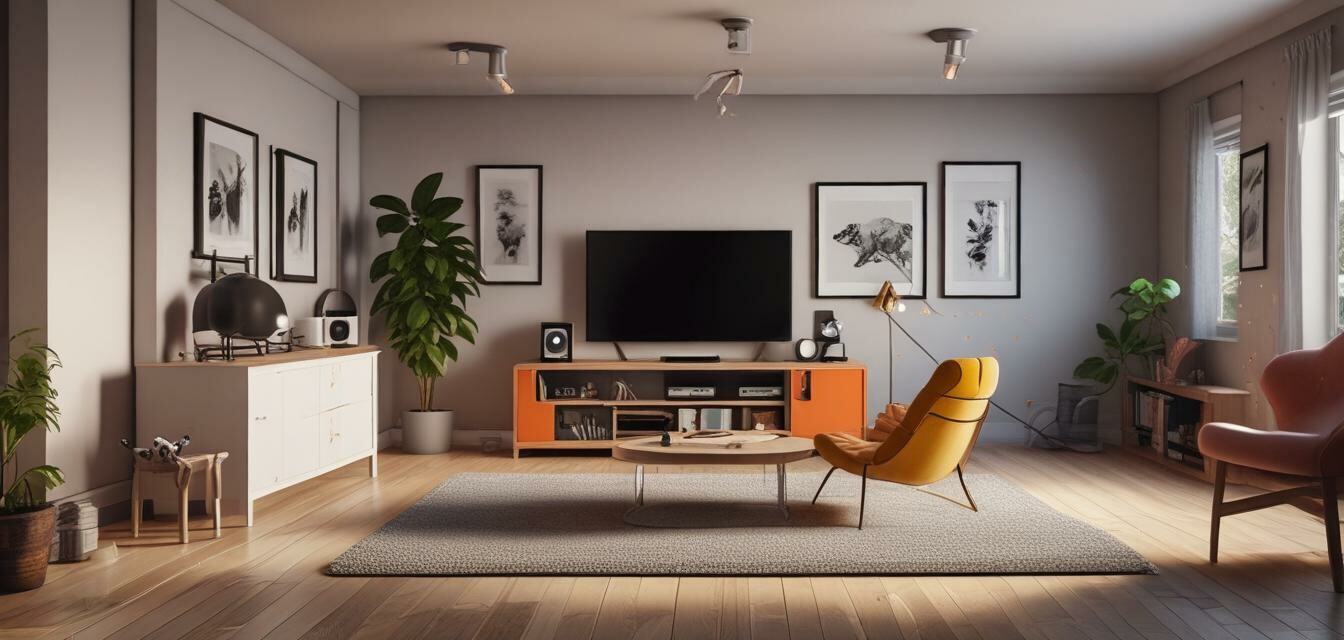
Creating a Kid-Friendly Gaming Space
Creating a vibrant and functional gaming area for kids can enhance their gaming experience while ensuring safety and comfort. This guide provides insights into the essential elements for designing a kid-friendly gaming space, focusing on both aesthetics and functionality.
Key Takeaways
- Prioritize safety by ensuring furniture is sturdy and without sharp edges.
- Select family-friendly consoles and games suitable for all ages.
- Consider gaming accessories that enhance comfort and engagement.
- Create a visually appealing environment with playful themes and colors.
- Incorporate versatile furniture for multi-use and storage.
Why Design Matters for Kids' Gaming Spaces
When designing a gaming space for kids, aesthetics and functionality play vital roles. A well-thought-out space not only enhances the gaming experience but also promotes a safe and welcoming environment.
1. Safety First
Your child's safety should always come first when creating a gaming zone. Consider the following:
- Use sturdy furniture and avoid items with sharp edges.
- Secure cables and cords to prevent tripping hazards.
- Choose non-toxic materials and finishes for decorations.
2. Family-Friendly Consoles
Selecting the right console is crucial. Explore options that cater to family entertainment:
- Look for consoles that offer a variety of educational and multiplayer games.
- Ensure the console allows for easy parental controls.
- Check for compatibility with family-friendly accessories.
To explore consoles suitable for family gaming, check out our Family-Friendly Consoles page.
Designing Aesthetics and Functionality
1. Choosing the Right Color Palette
Colors can significantly affect mood and engagement. Consider using vibrant, playful colors to create an inviting atmosphere:
- Opt for colors like soft blues, bright yellows, and greens to stimulate a playful environment.
- Incorporate wall decals or art related to their favorite games.
2. Selecting Comfortable Furniture
Comfortable furniture can make long gaming sessions enjoyable. Here are some recommendations:
| Type of Furniture | Features |
|---|---|
| Gaming Chairs | Ergonomically designed, often with adjustable features and padding. |
| Sofa Beds | Multi-functional for lounging and sleeping, available in bright colors. |
| Bean Bags | Fun, casual seating that can be moved easily around the room. |
3. Creating Storage Solutions
Organized gaming spaces help prevent chaos. Consider these storage options:
- Use shelving units to store games and accessories.
- Incorporate colorful bins or boxes for toys and extra gear.
- Create a designated area for charging devices and controllers.
Enhancing the Gaming Experience
1. Choosing Interactive Accessories
Accessories can provide a more engaging gameplay experience. Look into:
- VR headsets for immersive gaming sessions.
- Wireless controllers for easier handling and reduced clutter.
- Quality headsets that deliver sound without disturbing others.
Explore more accessories on our Gaming Accessories page.
2. Incorporating Gaming Furniture
Invest in specialized gaming furniture that caters to kids:
- Gaming desks with height-adjustable features.
- Stand-up desks for active gaming sessions.
For more on furniture options, visit our Gaming Furniture & Set-Up page.
Additional Tips
Beginner Section
- Involve your kids in the design process to encourage ownership of the space.
- Regularly update the gaming selection to keep it fresh and exciting.
- Mind the noise level; consider soundproofing options if necessary.
- Schedule designated gaming times to ensure balanced play.
Pros
- Encourages family bonding through shared experiences.
- Provides a safe and engaging environment for kids.
- Inspires creativity and team play through interactive games.
Cons
- Potential distractions can lead to over-gaming if not monitored.
- Initial setup costs may be high.
- Need for regular updates and maintenance to keep the space appealing.
Conclusion
Designing a kid-friendly gaming space is about creating an environment that is safe, engaging, and enjoyable. Armed with thoughtful considerations, the right furniture, and family-friendly gaming options, you can craft a space that delights both kids and parents alike. For more inspiration and tips, refer to our blog on Family Gaming Tips.